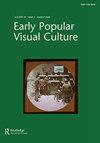Tracing the Australasian Asta Nielsen Boom in Trove and Papers Past: a tool for recreating the circulation histories of silent films
IF 0.1
4区 社会学
0 HUMANITIES, MULTIDISCIPLINARY
引用次数: 0
Abstract
ABSTRACT The circulation of early films was highly ephemeral, since films were regarded as consumable, interchangeable objects. Their rapid passage through cinemas, staying for just a few days or weeks, left few traces that can be used to document their movement a century later. Even in the case of films featuring a phenomenally successful star like the Danish actress Asta Nielsen in the burgeoning early cinema market of Australia and New Zealand (known collectively as Australasia or the Antipodes), few records of silent-era distribution or exhibition companies have survived to reveal which Asta Nielsen films they may have imported and screened, let alone what audiences thought of the films they were able to view. Fortunately, the open-access digitization of extensive archival newspaper holdings in New Zealand (paperspast.natlib.govt.nz) and Australia (trove.nla.gov.au) has made it possible to recreate much of the circulation history of many early films, thereby indicating their popularity and relative profitability. Such archival material confirms that Asta Nielsen was a well-known, highly valued star in the Australasian cinema firmament, with nearly two dozen films in circulation over a four-year period preceding the First World War. This article demonstrates how Trove and Papers Past can be used to follow the movement of the Asta Nielsen film When the Mask Falls/Wenn die Maske fällt (1912) through Australasia, contextualize it as part of a much larger phenomenon of Asta Nielsen films in the Antipodes, and situate it within the larger context of Australasian cinema exhibition and distribution in the pre-First World War era.追踪澳大拉西亚亚洲的尼尔森繁荣:一个重现默片流通历史的工具
早期电影的流通是非常短暂的,因为电影被认为是可消费的,可互换的对象。他们在电影院快速穿行,只停留几天或几周,几乎没有留下痕迹,可以用来记录一个世纪后他们的运动。即使是在澳大利亚和新西兰(统称为澳大拉西亚或澳洲)蓬勃发展的早期电影市场上,以丹麦女演员阿斯塔·尼尔森(Asta Nielsen)这样非常成功的明星为主角的电影,也很少有无声时代发行或放映公司的记录能保存下来,以揭示他们可能进口和放映了哪些阿斯塔·尼尔森的电影,更不用说观众对他们能够观看的电影的看法了。幸运的是,在新西兰(paperspast.natlib. government .nz)和澳大利亚(trove.nla.gov.au),大量报纸档案的开放获取数字化使得重现许多早期电影的流通历史成为可能,从而表明了它们的受欢迎程度和相对的盈利能力。这些档案材料证实了阿斯塔·尼尔森在澳大利亚电影界是一位知名的、备受重视的明星,在第一次世界大战之前的四年时间里,有近二十多部电影在流通。这篇文章展示了如何用《财富》和《过去的文件》来跟随阿斯特·尼尔森电影《当面具落下/Wenn die Maske fällt》(1912)在澳大拉西亚的运动,将其作为阿斯特·尼尔森电影在澳洲的更大现象的一部分,并将其置于澳大拉西亚电影在第一次世界大战前的展览和发行的更大背景下。
本文章由计算机程序翻译,如有差异,请以英文原文为准。
求助全文
约1分钟内获得全文
求助全文

 求助内容:
求助内容: 应助结果提醒方式:
应助结果提醒方式:


